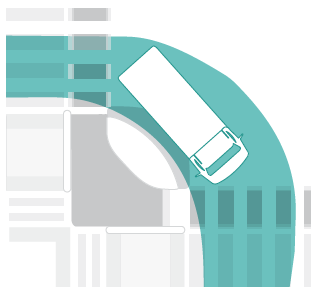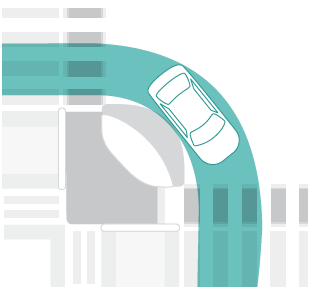Design Vehicle

The Design Vehicle is the largest typical vehicle that will frequently use the street. For major streets and downtown settings, a DL-23 delivery truck is a typical design vehicle. In protected intersections, it is acceptable for the design vehicle to use all of the first lane, and part of the second lane of the receiving street. In a neighborhood setting, a 15’ car/ light truck is a typical design vehicle, allowing for a tighter turn radius. In locations where truck turn volumes are high, a single-unit 30’-40’ truck is a typical design vehicle. A city bus should be used as a design vehicle only if a scheduled/ planned bus route makes that turn. In most cases, this affects only one corner. Turn speeds of 3-5 mph should be used for modeling the design vehicle.
Control Vehicle

The Control Vehicle or accommodated vehicle is the largest vehicle that will infrequently use the street. For major streets and downtown settings, a WB-50 truck is a typical control vehicle. In protected intersection designs, this vehicle can make the turn at a very low or ‘crawl’ speed. It is expected to turn over mountable elements, and may enter the lane adjacent to its lane of origin. In a neighborhood setting, sanitation or fire emergency vehicles are control vehicles. Turn speeds should be set 1-5 mph for the control vehicle. For turn speeds under 5 mph, field testing or observation is recommended as software may be inaccurate at low speeds.
Managed Vehicle

The Managed Vehicle is the most common vehicle to use the street. It is typically smaller than the design vehicle which means it is capable of higher, more dangerous speeds. In most urban streets, the managed vehicle is a personal vehicle or taxi. In protected intersections, the goal for a managed vehicle is to keep turn speeds below 10 mph. In some cases, this requires that the design vehicle turns over a mountable element.